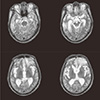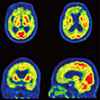Abstract
Dementia pugilistica (DP) or chronic traumatic encephalopathy (CTE) is a neurodegenerative disease or dementia that may affect amateur or professional boxers as well as athletes in other sports who suffer concussions. The condition is thought to affect around 15% to 20% of professional boxers and caused by repeated concussive or subconcussive blows. CTE was in the past referred to as dementia pugilistica, which reflected the prevailing notion that this condition was restricted to boxers. Recent research, however, has demonstrated neuropathological evidence of CTE in retired American football players, a professional wrestler, a professional hockey player and a soccer player, as well as in nonathletes. It is probable that many individuals are susceptible to CTE, including those who experience falls, motor vehicle accidents, assaults, epileptic seizures, or military combat, and that repeated mild closed head trauma of diverse origin is capable of instigating the neurodegenerative cascade leading to CTE. We report a 62-year old man suspicious of dementia pugilistica with clinical features of frontotemporal dementia and parkinsonism.
Figures and Tables
References
1. Roberts GW, Allsop D, Bruton C. The occult aftermath of boxing. J Neurol Neurosurg Psychiatry. 1990; 53:373–378.

2. Brooks N, Kupshik G, Wilson L, Galbraith S, Ward R. A neuropsychological study of active amateur boxers. J Neurol Neurosurg Psychiatry. 1987; 50:997–1000.

3. Gavett BE, et al. Mild traumatic brain injury: a risk factor for neurodegeneration. Alzheimers Res Ther. 2010; 2:18.
4. McKee AC, Cantu RC, Nowinski CJ, Hedley-Whyte ET, Gavett BE, Budson AE, Santini VE, Lee HS, Kubilus CA, Stern RA. Chronic traumatic encephalopathy in athletes: progressive tauopathy after repetitive head injury. J Neuropathol Exp Neurol. 2009; 68:709–735.




 PDF
PDF ePub
ePub Citation
Citation Print
Print





 XML Download
XML Download